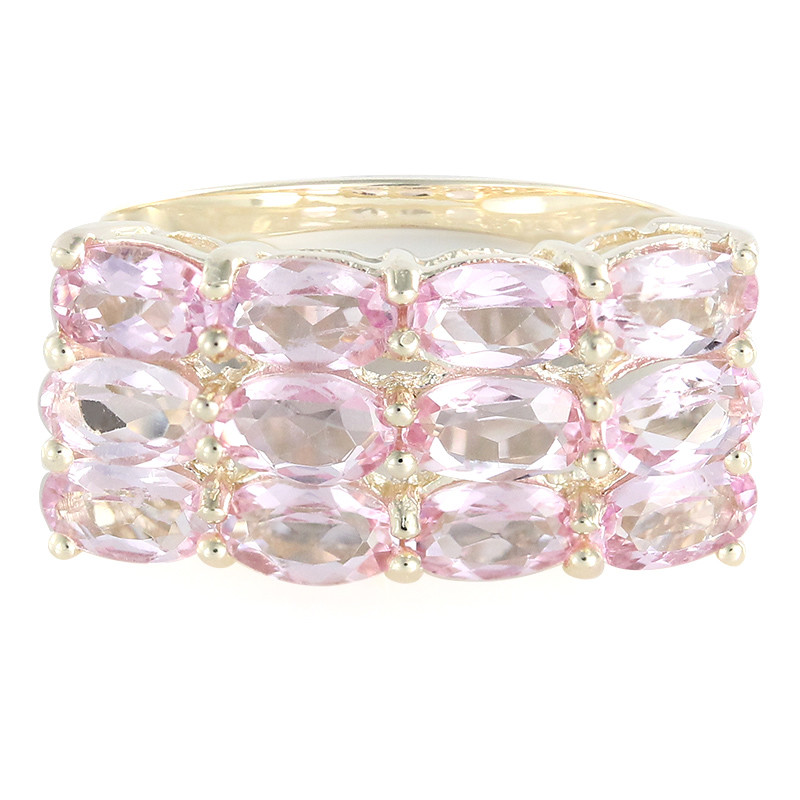How to Recognize Topaz
Topaz is a gem with various hues, so for an inexperienced eye, it can rarely be confused with Ruby or Sapphire, but more easily with other gemstones, such as Citrine, Apatite, Zircon, Fluorite, Kunzite, and Tourmaline. One of the strong points of the gem is its hardness: Topaz is, in fact, one of the hardest gems, being only two points below the Diamond which is a 10 on the Mohs scale of hardness.
The properties of Gemstones
As far as the intrinsic properties of a gemstone are concerned, Aquamarine, for example, is distinguished by its orthorhombic crystalline structure; Spinel, in turn, has a cubic crystalline structure.
The most precious beryl can be mistaken for the Topaz, but it has an indefinite cleavage level, while Topaz’s cleavage is quite perfect, a rarity among gems. Topaz has a lower density and a different chemical composition than chrysoberyl. In addition, fluorescence can be observed in the chrysoberyl, while in the Topaz fluorescence, where it appears, is very weak.
The white Topaz can be placed next to the Diamond but differs from the latter in terms of hardness. It is also less hard than Ruby and Sapphire, both of which have a hardness of 9 on the Mohs scale.
Another characteristic of this gemstone is its pleochroism, an optical effect whereby the same gem shows different colours according to the angle of view: the Topaz is a gemstone with an accentuated pleochroism.

Mystic Twilight Topaz – Sterling Silver Ring Rocks & co.
The role of colour in the choice
To choose a Topaz, the colour can have a double value: it can be useful in the identification of the gem, but, at the same time, it can create confusion to a less experienced eye, just for its many nuances.
The Topaz, in fact, has a wide variety of colours: from colourless, white, to yellow, orange, dark blue, pink to red, purple and light green. That is why it can be mistaken for many other gemstones. The naturally coloured Topaz owes its colour to iron and chrome; the colour is due to impurities, while the pure topaz is colourless. The rarest and most precious Topaz is yellow, pink or orange-red. These stones tend to be most confused with Citrine Quartz, but unlike the latter, the Topaz has a warmer colour, with a nuance clearly evident from the orange or pink tint. In addition, the brilliance of this stone is far superior. The colour intensity of some Topazes can fade when exposed to sunlight for a long time.
Incredibly rare are also the red and purple Topaz. Some Topazes are treated in order to improve colour, but in such cases, they are certified as such.
Focus on purity and brilliance
To choose a topaz, you can focus on its purity or “clarity“.
The topaz may vary from transparent to translucent. It is a gem with high transparency and few inclusions, so it can be examined with the naked eye: Topazes generally appear “eye clean“, which means that they show no imperfections. The topaz is highly appreciated for its brilliance and almost glassy gloss.
Variety of cuts and shape options
A great peculiarity of the Topaz is its versatility.
This gem can be cut into a wide variety of shapes: oval, round, octagonal, yoke, baguette, cushion, heart. Not to mention the thousand forms of fantasy as well as in animal forms. Buds with a less intense shade are more suitable for almost perfect cutting. The facets highlight the clarity and brilliance of the gem, while when a Topaz has irregular inclusions, you opt for a cabochon cut.
As we have already said, the hardness is important and often it is enough to look carefully at the bud even with the naked eye: its hardness, in fact, makes the Topaz resistant to scratches. However, cutters need to be very careful because it can easily break because of its perfect splitting point.
And you know how to choose your Topaz? Stay with us and learn more about the infinite nuances of this precious stone. . .








